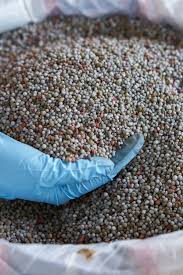
Dic . 16, 2024 13:50 Back to list
10-30-30 fertilizer factories
Understanding the 10-30-30 Fertilizer Formula A Key to Sustainable Agriculture
In recent years, the agricultural sector has faced numerous challenges, including soil degradation, declining crop yields, and increasing demand for food due to a growing global population. To address these challenges, farmers and agricultural scientists have been exploring various fertilizer formulations to maximize plant growth while minimizing environmental impact. One such popular formulation is the 10-30-30 fertilizer, which provides specific ratios of essential nutrients that are crucial for plant development.
The numbers in the 10-30-30 fertilizer represent the percentage by weight of three essential nutrients nitrogen (N), phosphorus (P), and potassium (K). This balanced mixture is designed to support plant growth at various stages of development. Understanding the role of each nutrient helps farmers make informed decisions on when and how to apply fertilizers effectively.
1. The Role of Nitrogen (N)
Nitrogen, constituting 10% of the 10-30-30 fertilizer, is vital for the synthesis of vital proteins and nucleic acids in plants. It promotes vigorous vegetative growth, resulting in lush foliage and healthy stems. Nitrogen is particularly crucial during the early growth stages when plants develop their green biomass. However, excessive nitrogen can lead to rapid growth that may result in weak stems and increased susceptibility to pests and diseases. Thus, careful monitoring of nitrogen levels and application rates is necessary to achieve optimal plant health.
2. The Importance of Phosphorus (P)
Phosphorus, representing a significant 30% of this fertilizer blend, plays a critical role in energy transfer and storage within the plant. It is an essential component of ATP (adenosine triphosphate), which fuels various biochemical reactions necessary for growth and development. Phosphorus supports root development, flower formation, and fruiting, making it particularly important during the reproductive stage of plant growth. Moreover, adequate phosphorus levels enhance a plant's resilience to environmental stresses, such as drought and temperature fluctuations.
However, phosphorus can be a pollutant in freshwater systems if applied excessively. It can runoff into streams and lakes, leading to algal blooms that deplete oxygen levels and harm aquatic ecosystems. Therefore, precision farming techniques, such as soil testing and targeted application methods, should be implemented to mitigate potential environmental risks.
10-30-30 fertilizer factories

3. The Function of Potassium (K)
Potassium, also comprising 30% of this fertilizer formulation, is often referred to as the quality nutrient. It contributes to the overall health of plants by regulating water uptake and promoting resistance to diseases and harsh weather conditions. Potassium helps facilitate photosynthesis and enhances the quality of fruits and vegetables, including their flavor, color, and shelf life. It is particularly important for crops that rely on high-quality produce, such as tomatoes, peppers, and grapes.
Incorporating potassium into the fertilization regimen ensures that plants can maintain their physiological functions and metabolic processes effectively, resulting in stronger plants that can withstand stresses from pests and diseases.
4. Sustainable Practices with 10-30-30 Fertilizer
While the 10-30-30 fertilizer offers a well-rounded nutrient profile for crops, sustainable agricultural practices should underpin its use. Integrating organic matter, such as compost and cover crops, into the soil can enhance nutrient availability while improving soil structure and health. Additionally, employing practices such as crop rotation, precision application methods, and regular soil testing can help farmers optimize fertilizer use and minimize environmental impact.
Moreover, educational initiatives aimed at farmers can promote an understanding of nutrient cycling, allowing for a more holistic approach to fertilization that aligns with sustainable agricultural principles.
Conclusion
The 10-30-30 fertilizer is a valuable tool in modern agriculture, providing essential nutrients necessary for optimal crop growth. By understanding the roles of nitrogen, phosphorus, and potassium, farmers can implement more effective fertilization strategies that not only improve yield and quality but also support sustainable practices. Striking a balance between productivity and environmental stewardship will be essential as the agricultural sector continues to adapt to the challenges of the 21st century. In a world where food security is paramount, the thoughtful application of fertilizers like the 10-30-30 formulation could play a pivotal role in ensuring that we can feed future generations sustainably.
-
10 10 10 Fertilizer Organic—Balanced NPK for All Plants
NewsJul.30,2025
-
Premium 10 10 10 Fertilizer Organic for Balanced Plant Growth
NewsJul.29,2025
-
Premium 10 10 10 Fertilizer Organic for Balanced Plant Growth
NewsJul.29,2025
-
Premium 10 10 10 Fertilizer Organic for Balanced Plant Growth
NewsJul.29,2025
-
50 Pound Bags of 13-13-13 Fertilizer for All Plants – Bulk & Organic Options
NewsJul.28,2025
-
High-Efficiency 15-30-15 Granular Fertilizer for Healthy Crops
NewsJul.28,2025
